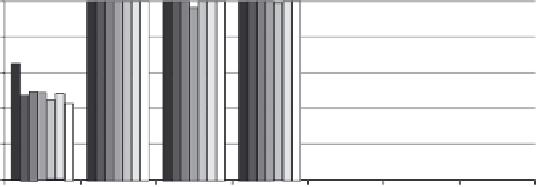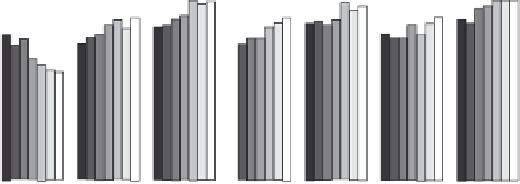Environmental Engineering Reference
In-Depth Information
(a)
(b)
100
100
80
80
60
60
40
40
Sand
Sand
20
20
0
0
No Osorb
Fe-Osorb
(1%)
Fe-Osorb
(2%)
Mg-Osorb
(1%)
Mg-Osorb
(2%)
Zn-Osorb
(1%)
Zn-Osorb
(2%)
No Osorb
Fe-Osorb
(1%)
Fe-Osorb
(2%)
Mg-Osorb
(1%)
Mg-Osorb
(2%)
Zn-Osorb
(1%)
Zn-Osorb
(2%)
100
100
80
80
60
60
40
40
Soil mix
Soil mix
20
20
0
0
No Osorb
Fe-Osorb
(1%)
Fe-Osorb
(2%)
Mg-Osorb
(1%)
Mg-Osorb
(2%)
Zn-Osorb
(1%)
Zn-Osorb
(2%)
No Osorb
Fe-Osorb
(1%)
Fe-Osorb
(2%)
Mg-Osorb
(1%)
Mg-Osorb
(2%)
Zn-Osorb
(1%)
Zn-Osorb
(2%)
Simulated runoff events
Simulated runoff events
1st
2nd rd
4th
5th
6th7th
1st
2nd
3rd4th
5th th
7th
FIGURE 33.7
Removal eficiency of atrazine via unsaturated (a) and saturated (b) bioretention systems among three different Osorb-metal composites amendments (Fe-Osorb,
Mg-Osorb, and Zn-Osorb) with three different amounts (0%, 1%, and 2%) in two bioretention base media (sand and soil mix) from seven sequential runoff events.
Loading for each event was 0.5 mg of atrazine in 1 L (500 ppb).























